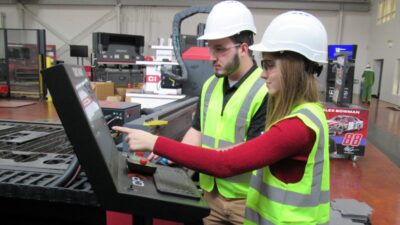China's melamine-contaminated milk scare of 2008 serves as a product safety lesson for all manufacturers. The Yili Group's embrace of modern control and production technology in the aftermath of the event is helping to ensure a similar scenario never again occurs.
When the melamine-contaminated baby milk scandal broke out in China, public attention focused more on the product quality and safety of China’s diary industry than ever before.
As one of the largest dairy producers in China, Inner Mongolia Yili Industrial Group Co. Ltd. (Yili Group) sought to gain customers’ confidence again with reliable products. To do that, Yili Group introduced food safety management systems throughout its supply chain to control everything from cow feed analysis, disease prevention, raw milk collection, storage, delivery stages. Advanced control techniques were also applied in Yili’s factories and processes.
Maximum safety
The Zhaodong facility in Heilongjiang Province, is a large liquid milk production plant of Yili Group. Twenty-five dairy production lines are used in the Zhaodong facility, where more than 850 tons of high-temperature sterilized milk and 150 tons of yogurt are produced each day. Industrial automation techniques have been implemented in each step of the process in the facility, from milk collecting, standardizing, and filling, to packaging operations. Using this automated equipment, managers and engineers at Zhaodong facility hope to answer the following questions to meet customer safety requirements:
-
How to visualize, analyze, and manage the production process;
-
How to trace products from collection to distribution; and
-
How to re-track products and identify the shift responsible when a milk problem occurs?
GE Fanuc’s Proficy Real-Time Information Portal was installed at the Zhaodong facility as the plant’s milk tracking and counter-tracking system in February 2008. According to Tong Zhengjun, software solution senior specialist of GE Fanuc Intelligent Platforms, the Proficy system can visualize the entire process from raw milk collecting to sterilized filling; manage variable product batches; collect production, process parameters and laboratory analysis data; analyze and manage KPIs; establish comprehensive product documents; and monitor all products and the whole production process.
“Using sensors, control system technology can now be used to read out the volume of the protein and fat content in milk, so the company can achieve an accurate and objective record of its production processes,” said Sean Robinson global industry manager for consumer packaged goods of GE Fanuc. “Quality control engineers can compare readings and identify relevant production tendencies. If the content of some nutrition element changes unexpectedly, those engineers will notice the abnormal condition immediately.”
Track and counter-track
The tracking and counter-tracking system in the Zhaodong facility includes a raw milk collection system, preprocessing system, material parsing station, ultra-high-temperature sterilization system, quality management station, and packaging system. The open architecture of the Proficy system, interfacing with the plant’s open communication protocols, allows the system to collect and store data from the different plant systems to provide a complete view of plant production information.
According to Tong, the HMI/SCADA-iFIX application in the Proficy system serves as the operator’s main interface for data collection. The application is connected to the field PLCs to pick up production information first hand. Proficy Historian, a real-time process database, provides monitor displays with real-time data. Through collectors equipped on discrete HMI/SCADA throughout the plant, the centralized historian gathers all production data and forms a foundation for production management, tracking, and analysis. Meanwhile, Proficy Plant Applications serve as the facility’s manufacturing execution system (MES). With this application, engineers can track the production process and product lines, monitor quality, measure effectively and directly manage the production of different batches.
An ISA95-compliant virtual digital model, which is built in to the MES system, maps production resources in the field, such as production lines and production units, as well as related quality and process parameters for each. The actual production process is abstracted into models, including production event and tracking models, and downtime management models. Minute-by-minute plant data is captured in this system so that entire lot production histories can be reviewed, if necessary.
With the application’s tracking and counter-tracking system, managers can focus more on the key areas in dairy production, and they can identify the key factors to improve production and control each stage of production more precisely.
Following the melamine event and the plant’s control and production system upgrades, Yili Group organized a tour for civilians to visit the production plant in the Zhaodong facility, to highlight the plant’s new production processes and quality control methods. Visitors remarked that they, after seeing the facility’s environment and production lines and its strict controls on raw materials, felt more confident that the milk produced in this plant is safe to drink.
Yiliu Liu is a Ph.D. student at Tianjin University and a writer for Control Engineering China.
| Author Information |
| Yiliu Liu is a writer for Control Engineering China. |



